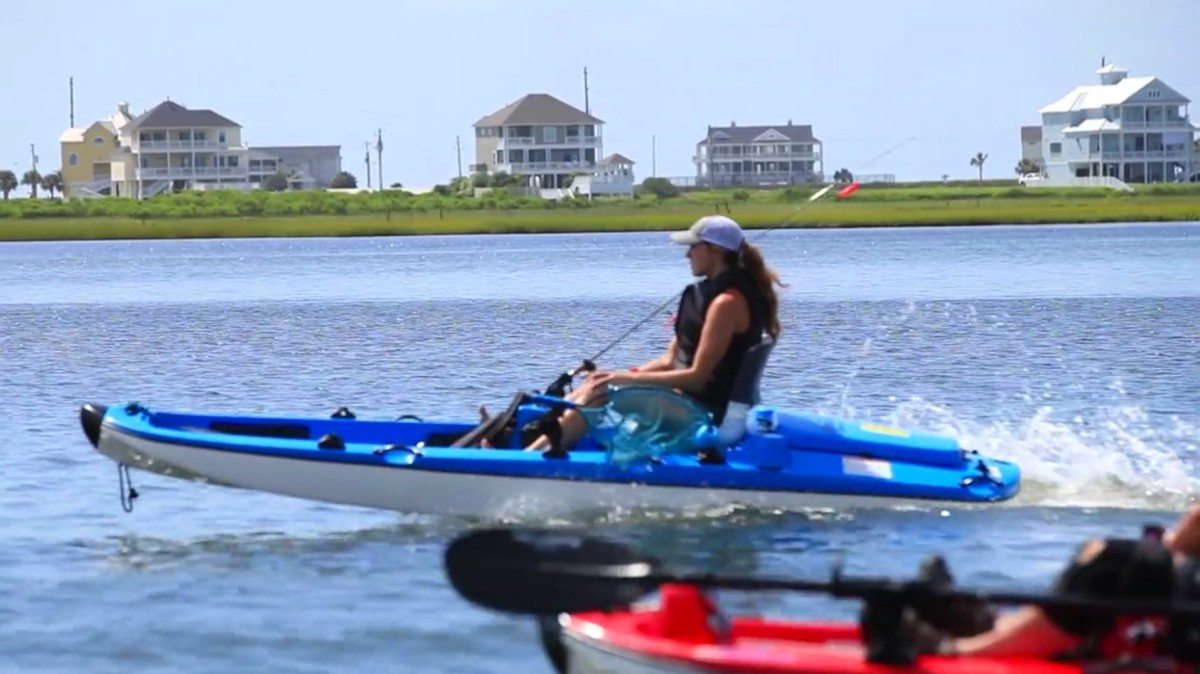After spending countless hours on the water experimenting with different trolling motor setups on my kayak, I've learned there's a real art to getting the most speed and efficiency out of these handy devices. I'll never forget the first time I installed a trolling motor on my 12-foot fishing kayak – I was so excited about the possibilities, but boy, did I make some rookie mistakes! Today, I'm sharing everything I've learned about maximizing your kayak's speed with a trolling motor, from mounting techniques to power management.
Understanding Trolling Motor Basics for Kayaks

Let me tell you about the time I learned this lesson the hard way. I'd mounted a 55-pound thrust motor on my kayak, thinking "more power equals more speed!" Well, that oversized beast actually slowed me down and drained my battery in record time. Through trial and error, I've discovered that the sweet spot for most kayaks lies between 30-45 pounds of thrust. The key is finding the right balance between power and weight.
The most crucial factor in determining your optimal trolling motor setup is understanding your kayak's length-to-beam ratio. I've found that kayaks between 10-14 feet typically perform best with a 30-pound thrust motor, while longer boats might benefit from slightly more power. You'll also want to consider your kayak's weight capacity – don't forget to factor in your gear, battery, and yourself!
Speaking of batteries, they're not just power sources – they're speed influencers! I used to struggle with heavy lead-acid batteries until I switched to lithium. The weight difference was like night and day, and my kayak's performance improved significantly. While lithium batteries are pricier, they're worth every penny for the performance boost they provide.
Optimal Mounting Techniques for Maximum Speed
After years of experimenting with different mounting positions, I can confidently say that placement is everything! The most efficient position I've found is typically on the stern, slightly offset to one side. This setup maintains better balance and reduces drag compared to side-mounting options.
My breakthrough moment came when I realized the importance of shaft length. Too long, and it creates unnecessary drag; too short, and you risk cavitation in choppy waters. For most kayaks, a shaft length between 24-30 inches provides optimal performance. I remember using a 36-inch shaft initially – what a mistake that was! The extra length just created more resistance and actually reduced my top speed.
The mounting height is equally critical. Through extensive testing, I've discovered that the propeller should sit about 6-8 inches below the waterline for optimal thrust. Any deeper, and you're just creating unnecessary drag; any shallower, and you risk ventilation issues that can reduce efficiency.
Speed Optimization Techniques

Here's where things get really interesting! The first game-changer I discovered was prop selection. The stock propeller that came with my motor was decent, but switching to a more efficient three-blade design with a slightly higher pitch increased my top speed by almost 0.5 mph. That might not sound like much, but it makes a huge difference over a long day of fishing!
Power management is another crucial aspect that took me years to master. Running your motor at full throttle actually isn't the most efficient approach. I've found that operating at about 75% power often provides the best balance of speed and battery life. This sweet spot allows you to maintain a steady pace without draining your battery too quickly.
Weight distribution has a massive impact on speed too. I learned to position my gear and battery to maintain a slight bow-up attitude, which helps the kayak plane better at higher speeds. The difference was remarkable – proper weight distribution alone increased my cruising speed by nearly 0.3 mph!
Advanced Tips for Maximum Performance
Temperature and water conditions play a bigger role than most people realize. I've noticed my kayak performs best in water temperatures between 60-75°F. In colder water, the battery doesn't perform as efficiently, and in warmer water, you might experience more cavitation issues.
Regular maintenance is absolutely crucial for maintaining top speed. I clean my propeller after every use and check for fishing line wrapped around the shaft – a problem I encountered way too often until I started being more vigilant. Even a small amount of debris can significantly impact your speed and efficiency.
One of my favorite speed-boosting tricks is adding a hydrofoil stabilizer to the motor. This not only improves stability but also helps reduce cavitation at higher speeds. Just make sure it's properly aligned – I learned that lesson after a few frustrating outings with a misaligned stabilizer!
Conclusion
After years of trial and error, I can confidently say that maximizing your kayak's speed with a trolling motor is achievable with the right setup and knowledge. Remember, it's not just about raw power – it's about finding the perfect balance between motor size, mounting position, and proper maintenance. Start with these tips, but don't be afraid to experiment and find what works best for your specific setup.
I'd love to hear about your experiences with trolling motors on kayaks! Drop a comment below sharing your tips and tricks for maximizing speed – we're all learning together in this community.
